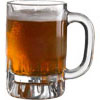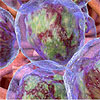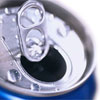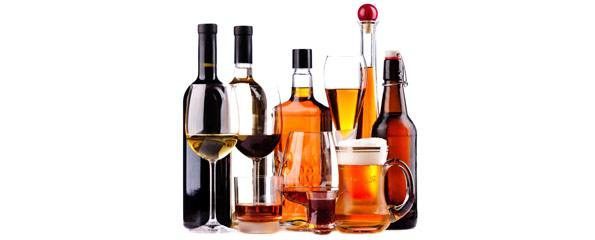Alcohol and Drinking
Tools and calculators
Alcohol and your body
Congeners in alcoholic beverages
 | Congeners are biologically active chemicals (chemicals which exert an effect on the body or brain) and are often contained in alcoholic beverages, in addition to ethanol. Congeners are produced in the process of fermentation or ageing, and may also be added during the production process. Some congeners are thought to contribute to hangover symptoms. |
For more information, see Congeners in Alcoholic Beverages.
Sperm and alcohol
 | Alcohol has a range of short and long term health effects, including effects detrimental to the production of sperm. These effects include reduced concentrations of sperm in the semen, and reduced concentrations of sperm which have a normal shape and are able to move or swim. |
For more information, see How Tobacco, Alcohol and Drugs Affect Sperm.
Pregnancy and alcohol consumption
 | When a pregnant woman drinks alcohol, it also enters the bloodstream of her foetus, and when excessive amounts of alcohol are consumed they can have damaging effects on the foetus. |
For more information, see Pregnancy and Alcohol Consumption.
Cancer and alcohol
 | Alcohol consumption is one of the leading causes of cancer worldwide, following only tobacco, chronic infections and obesity. The risk of developing some cancers increases even in individuals who drink alcohol moderately. It is generally thought that ethanol is not a carcinogen itself, but rather it stimulates other cancer-causing agents. |
For more information, see Alcohol and Cancer.
Pain and alcohol
 | Alcohol was one of the first substances found to be effective as a pain reliever. Many people continue to deal with pain by self-medicating with alcohol. Unfortunately, there is a tendency for alcohol to be abused, and the use of alcohol for pain relief can easily cause problems. |
For more information, see Alcohol and Pain.
Alcohol consumption: short-term health consequences
 | As the amount of alcohol consumed in a single sitting is increased, the BAC increases proportionately. Once the BAC has surpassed 0.05%, inhibitions are reduced and judgement and movement are impaired. |
For more information, see Alcohol Consumption: Short-Term Health Consequences
Alcohol consumption: long-term health consequences
 | There have been numerous studies investigating the relationship between alcohol consumption and health outcomes and a large list of negative long-term effects have been revealed. There is still much more research that needs to be done to determine the relationship between the pattern and quantity of alcohol consumption and a multitude of health outcomes. |
For more information, see Alcohol Consumption: Long-Term Health Consequences.
Drinking alcohol
How to help a drunk person
 | Supporting those with alcohol use problems, whether it be alcohol abuse or dependence, risky alcohol behaviour, injury from alcohol or alcohol poisoning, has obvious benefits. These benefits extend beyond the individual to their families, work places and society. It is important that members of the general public know how to recognise when a person is intoxicated and how to help them if the situation arises. |
For more information, see Alcohol: How to Help a Drunk Person.
Hangovers
 | An alcohol hangover refers to the mental, emotional and physical symptoms which an individual experiences after they have consumed alcohol. A hangover occurs when the person has recovered from the intoxicating effects of alcohol – that is, when the body has metabolised the alcohol and is sober. |
For more information, see Hangovers.
Binge drinking
 | There is a big difference between having a beer or glass of wine, and binge drinking. While the responsible consumption of alcohol may be beneficial, binge drinking is a very serious matter that has important health, personal and community consequences. |
For more information, see Binge Drinking.
Responsible drinking
 | A large percentage of Australian adults are not aware of the amount of alcohol they can consume before putting their health at risk. It is recommended that men and women drink in moderation and avoid drinking to intoxication. |
For more information, see Alcohol: Responsible Drinking.
The health, social, and financial burden
 | Various cultures may have very different attitudes, beliefs, norms and expectancies about drinking. Beliefs about alcohol are inconsistent and sometimes negative and therefore alcohol is associated with anti-social and violent behaviour. Alcohol-related problems are associated with excessive drinking in any culture. In general, the majority of people consume alcohol in moderation. |
For more information, see Alcohol: The health, social, and financial burden.
Alcohol dependence
 | Alcohol dependency, also known as alcoholism, is the most common substance use disorder in Australia. Individuals who are alcohol dependent tend to prioritise drinking alcohol over other activities (including seeing friends and going to work). Alcohol dependency can range from mild to severe. |
For more information, see Alcohol Dependence.
Drink safely on New Year’s Eve
 | New Year’s Eve is a night when a lot of people attend social gatherings, often large public events. People typically drink alcohol at New Year’s Eve gatherings, and while many people drink responsibly, drinking until drunk or intoxicated is also common amongst people of all ages. |
For more information, see Healthy Alcohol Consumption on New Year’s Eve.
Dates
Tags
Created by:

 Login
Login














